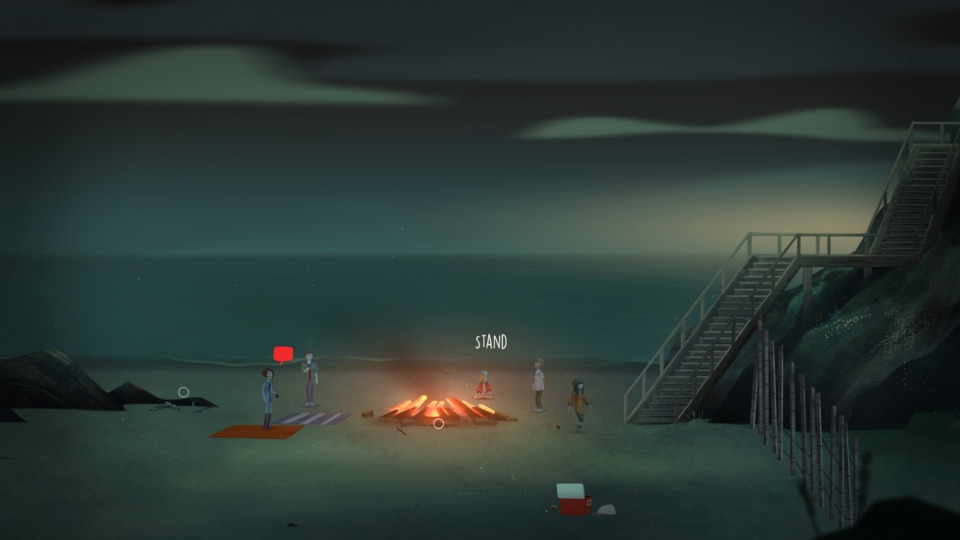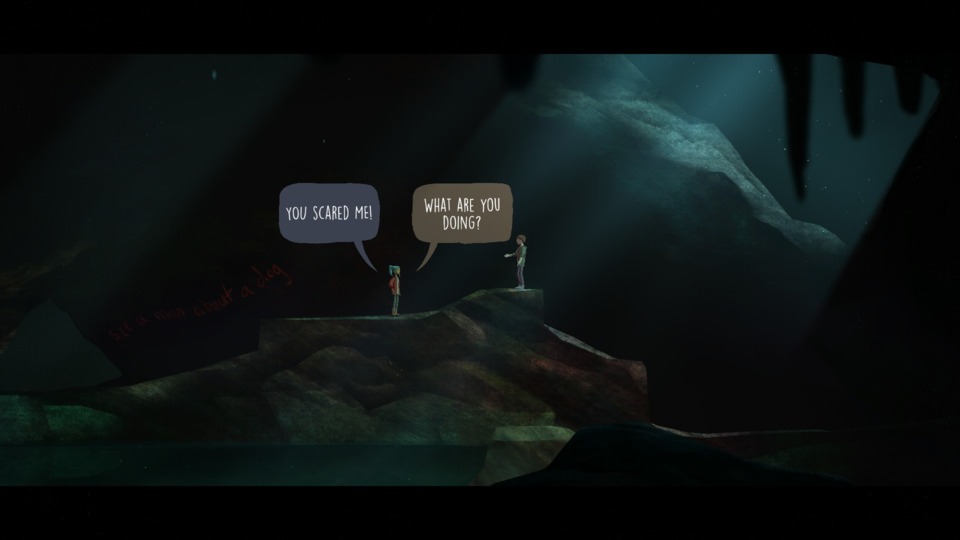Convo Interruptus: How Oxenfree Breaks New Ground for Dialog in Games
By Darth_Navster 8 Comments
In high school I was a bit of a theater geek. Whether I was working backstage or doing a terrible impression of an actor onstage, I adored the artifice that was live performance. As anyone who’s had the thespian bug bite them can tell you, there are a great many rules that govern how a play operates. For actors, these rules include such things as delivering one’s lines as written or agreed upon by the company, avoiding interactions with the audience during a performance, and not saying “good luck” to another member of the production. One of the most sacred rules, however, is to never step on another actor’s lines. Interrupting another actor impedes a performance for a variety of reasons. For one, it makes the dialog harder to follow for the audience, who rely on theater's specific speaking tropes to understand what is being said. For another, it is disrespectful to the person being interrupted, as you are taking away from the time that they are the focus of the show. Finally, it simply looks and sounds unprofessional.

However, rules such as these only make sense in the context of performance. We interrupt each other, mishear words or phrases, and change the subject all the time in real life casual conversations. To converse with our friends otherwise would come across as stilted and weird. For a long time, this wasn’t really an issue, as we’ve come to accept that speech in theater, television, and film is fundamentally different than real life speech. But in video games, using these long established performative rules for speaking may not be as effective in delivering dialog. There’s no guarantee that players will stay in one spot or even pay attention to what is being said, and so we often see Band-Aid solutions such as walk and talk segments that kill pacing, cutscenes that don’t match up with the in-game aesthetic, or stand-in-place RPG style interactions that take agency away from the player. For the most part players and designers have just accepted the status quo; acknowledging the difficulty of putting organically implemented dialog into games and leaving the situation be. Thankfully, the folks at Night School Studio feel that games can do dialog better, and have proven it with the excellent Oxenfree.
The game opens with someone excitedly discussing military bases, ranches, and Henry Fonda. You don’t get to hear the entirety of what he’s been saying, and it feels like your mind has drifted and you’re just now paying attention. The screen then reveals the voice coming from a boat, which appears to have three passengers in addition to the vessel’s skipper. Blank speech bubbles begin to pop up from one of the passengers, indicating that he’s the one who’s been prattling on. Another of the passengers chimes in, complete with his own speech bubble, and asks who Henry Fonda is. The third passenger is then given an opportunity to speak, but instead of saying something, three speech bubbles with text begin to float above her head. The game subtly encourages the player to pick one of the bubbles by pressing the corresponding button. If you’re quick enough with your decision, something interesting happens. The player character cuts off the other speaker to deliver her lines. The game doesn’t miss a beat and continues the trio’s discussion like nothing happened, weaving each character’s lines into the conversation in a seamless manner.

Right then, Oxenfree lays out what it’s all about: dialog. Namely, naturalistic and free flowing dialog that isn’t beholden to specific line readings. The game expands upon this further once the boat docks at its island destination. The characters, introduced as the player character Alex, her best friend Ren, and her new step brother Jonas, are here for a night of drinking and partying to celebrate the end of their junior year of high school. As they head to the island’s beach to meet up with their other friends, Nona and Clarissa, they chat about the goings on in their lives. The player is given ample opportunity to join in on the conversation, or even change the subject by selecting points of interest. Alternatively, Alex can say nothing, and the other characters will either acknowledge her silence or keep the conversation going with one another.

The result is a freewheeling conversation that naturally lays out the exposition for the player. Ren is established as the joker of the group, keeping the discussion lighthearted when tensions between Alex and Clarissa flair up. Jonas starts out shy, being the newcomer, and listens more than he speaks. Nona remains quiet for the most part, but her ears perk up when Alex mentions Ren’s crush on her. The excellent voice work is complimented by the game insisting on a wide angle shot for framing the friends. Whether by artistic choice or budgetary constraints, Oxenfree keeps the player far enough away from the characters that it is tough to discern facial expressions or other forms of subtle body language. While you’d think that this would feel less intimate, it actually does the opposite. Based on the dialog and sparse yet gorgeous art style, the game encourages the player to imagine how the characters are interacting based on their own experiences and emotions, leading to greater identification with them.
These interactions, enabled by the excellent dialog system, really anchor Oxenfree even as it gets into some out-there horror and conspiracy story beats. The game allows for a variety of endings, but unlike most other games based on choice Oxenfree doesn’t telegraph most of its decisions. Being curt to certain characters can damage your relationship with them and alter their actions after the story ends, or playing matchmaker could encourage two characters to couple up. But again, these aren’t binary, single point choices. The consequences arise from the sum of all of Alex’s interactions with her friends, and like those interactions, the results can be surprisingly big and small. As a result, Oxenfree’s narrative feels a lot more real than most video game stories.
To be clear, Oxenfree’s approach to dialog and character interaction isn’t completely true to life. There’s still performative aspects to it. Characters are able to hear one another clearly over large distances or ambient sounds, and the script can at times feel a little too witty for high schoolers. What the game does instead is establish a new performance convention that could serve video game narratives well. Certainly, this doesn’t mean that cut scenes or stand-in-place interactions should be completely done away with, but it does mean that there is a path for video games to implement dialog that feels more natural within the constraints of the medium. Oxenfree may be a small game, but it has some big ideas, and they’re worth checking out.